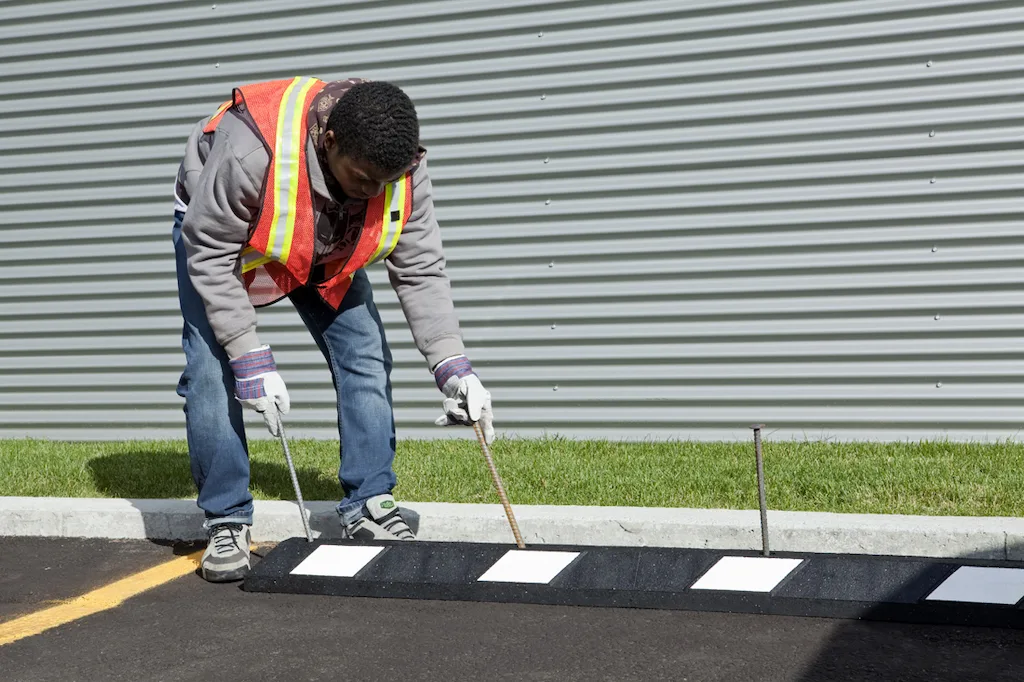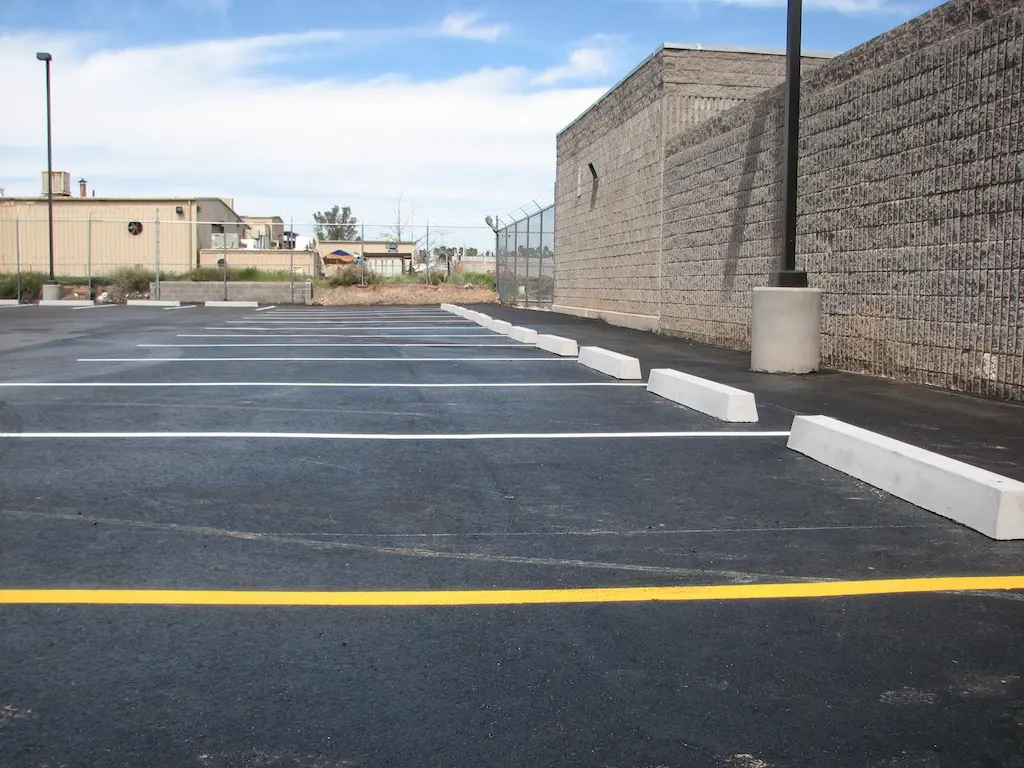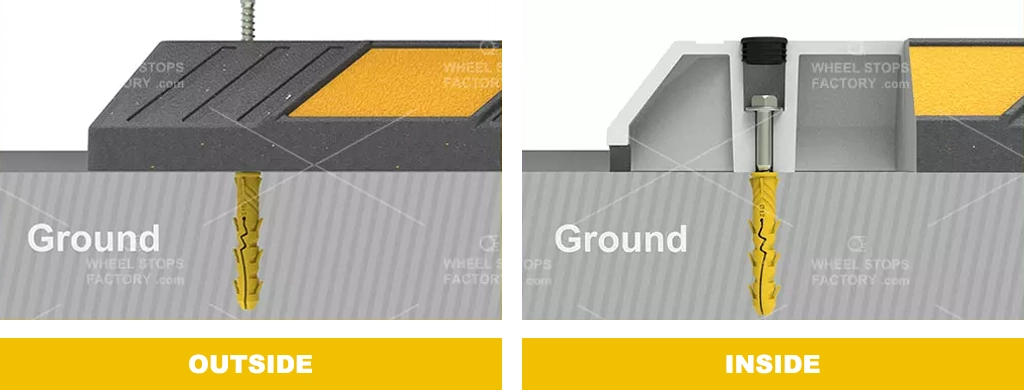How to install a Parking Kerb?
Having parking wheel stops in your parking garages or parking areas can save you a lot of trouble. Drivers will automatically learn to park their vehicles in the correct parking spot without crossing the parking lane. These tools will also assist you in keeping your parking lots in good form.
Parking kerbs are found in various locations, including electric vehicle charging stations, handicapped parking spaces, free parking areas, and residential parking spots.
Rubber, plastic, and metal parking blocks are easier to install than other wheel stoppers. People can fix them on the ground surface by operating drilling machines and using hammers and bolts.
Like professionals, are you interested in learning how to fix a parking kerb in a parallel parking or a reserved parking area? This guide will tell you exactly what you need to know!
Is it easy to install a parking block?
Parking blocks are also considered easy-to-install devices like other parking management and traffic calming tools. You can carry and handle them easily as their structure is simple and easy to hold.
Plastic, rubber, and rubber-plastic blend parking blocks are lightweight. You can carry them in your hands to bring them to the point of installation in street parking, street garage, metered parking, angle parking, monthly parking, or perpendicular parking zones.
In contrast, concrete wheel stops are heavy. You may need a forklift or a helping hand to transfer them to a car parking space.
Parking blocks are fixed to the ground like many other objects, meaning you need a drilling machine to drill holes into the ground and then insert and tighten bolts to fix the parking block to the ground.
Does it cost a lot to install a parking curb stop?
No, parking curb installation does not cost much. Most installation service providers charge only a few pounds to install these tools. Their installation fee depends on many factors, including the number of parking kerbs, ground surface type, parking curb stop type, and location.
You can save the installation cost by installing wheel stops in the downtown parking, green parking, standard parking, short-term parking, or employee parking area. Follow the guide that is explained below to learn how to do that.
How long does it take to install a parking bump stop?
Parking curb stop installation takes only a few minutes if you know how to do that. All you need to do is mark the area, drill holes, and then fix the wheel stops with bolts. Installing a single piece in an event parking structure will probably take no more than 10 minutes.

What tools do I need to install a parking curb?
You need only a few basic tools to fix a parking curb in a city parking garage, individual parking place, temporary parking zone, or staff parking deck. These tools include:
- A forklift to lift heavy wheel stops
- A hammer drill to create holes in the ground
- A sledgehammer to insert bolts inside holes
- Wedge bolts to fix the tyre stopper to the ground
- A measuring tape to mark wheel stopper installation points
Some wheel-stop manufacturing companies provide their buyers with free fixings. So, buying their products can help you save wedge bolt costs.
Other tools, including a wrench and drilling machine, are usually available at home.
For the small number of installations in your parking space or at home, we recommend using a torque wrench, which is simple to use and easily accessible; When you need to install a large number of parking curbs, we recommend using an electric impact wrench, and it will save you a lot of time and effort!
If you don’t have them, you can rent them easily or get them from a friend who has them.

How far should the parking stop be placed from the wall?
To make the most of your parking blocks, you need to install them correctly, in the correct place. You must maintain a proper distance between a parking kerb and a wall to provide others with an ideal parking experience.
Maintaining a distance of about 1 metre between the wall and the tyre stopper is recommended to allow drivers to park their vehicles without any trouble. This way, vehicles will be safe from the wall of public parking lots.
If you increase the distance, you may use less of your public parking lot’s space and waste more. Similarly, if you reduce the distance, the vehicle may end up colliding with the wall due to the little space between them.

6 steps to install a wheel stop
Using the step-by-step guide explained below, you can install a wheel stop in airport parking, restricted parking, campus parking, vehicle parking, garage parking, or motorcycle parking facility.
Step 1: Find a suitable location for your daily parking space
To create accessible parking spaces, you need a suitable piece of land that can accommodate several vehicles. You also need to consider its safety and landscape. The area should be according to your city’s parking rules and regulations.
Step 2: Mark parking spots
The next step is to design your public parking area. Determine the number of parking spots you want it to have and the distance between these spaces. Doing so will help you decide the size and number of car tyre stoppers you need in paid parking, city parking, overnight parking, or disabled parking structures.
Step 3: Collect all the necessary tools
After designing your paid parking lot, it is time to select tools that you need to install parking signs, speed ramps, or wheel stops according to parking regulations.
Enlisted below are the key tools you need to fix a parking block to a city parking garage’s even or uneven surface.
- Hammer drill
- Torque wrench (or electronic impact wrench for large quantities)
- Small sledgehammer
- Wedge bolts (usually come with parking kerbs)
- Parking stoppers
QUICK
CONTACT
Feel free to contact us now. Our team will
always be happy to help you!
Step 4: Bring wheel stops to your desired public parking area
You can lift plastic and rubber wheel stops and transport them to the installation point because they are light in weight. But when it comes to concrete and steel wheel stoppers, you will need a forklift or a tractor having a fork attachment.
Step 5: Identify installation points
Now comes an important step. Mark tyre stopper installation points in free parking space according to your needs. Use a measuring tape to maintain a suitable distance between all the wheel blocks. Mark installation points with chalk.
Step 6: Fix wheel stops to the ground
Place the car tyre stopper above the ground and mark its holes’ positions in the ground with chalk. Remove the parking kerb and drill holes with a drilling machine in marked areas. Remove dust and concrete from the site and place the parking stopper in the same place again.
Use a wrench to insert bolts inside holes to fix car stops tightly in the ground of visitor parking, on-street parking, designated parking, minute parking, disability parking, or public parking garages.

Conclusion
Car park bump stops are worth-buying parking management tools that help keep general parking or guest parking areas well-organised and well-structured.
They are beneficial for parking bays, long-term parking, alternate side parking, or car parking facilities. You should consider buying them to make your parking space more functional.
Use the installation guide explained in this article to fix these tools in an hourly parking area, driveway, motorcycle parking capacity, car parking site, or special event day parking area like experts.
You can enhance the effectiveness of these tools by displaying self-parking signage or installing a speed ramp.
QUICK
CONTACT
Feel free to contact us now. Our team will
always be happy to help you!
For further information, we recommend you check the following pages:
